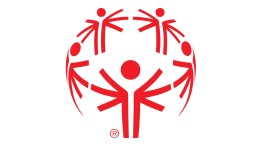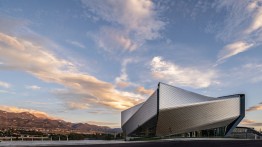COOPERMADE: Olympics, Paralympics & Special Olympics
Alumni from each of The Cooper Union’s three schools—architecture, art, and engineering—have made critical contributions to the planning, identity, and history of organizations dedicated to excellence in athletics: the Olympics, the Paralympics, and the Special Olympics.
This last was led by Cooper mechanical engineering graduate Bruce Pasternack ME’68 (1947-2021) from 2005 to 2007. Created for athletes with intellectual and physical disabilities, the Special Olympics was officially founded in 1968, growing out of work done by Eunice Kennedy Shriver. Pasternack took on the role of President and CEO of Special Olympics, Inc. after a particularly distinguished career in the energy field. At the age of 26, while working on his PhD, he was drafted by the Gerald Ford administration to be head of energy policy at the Federal Energy Administration and principal staff to the White House Energy Resources Council and the President’s Council on Environmental Quality. Afterwards he took a position at a global consulting firm where during a 30-year span he held multiple leadership roles and wrote two best-selling business books. Then near the end of his career, Pasternack decided to turn to philanthropy. He was noted by colleagues and athletes’ families for his extraordinary energy, warmth, and commitment to the organization’s mission. During his tenure, the Special Olympics reached its goal of greatly expanding the number of participants to 2.5 million worldwide. Pasternack passed away last year from younger-onset Alzheimer’s, with which he was diagnosed in 2013. According to his daughter, Joanne Pasternack, his role at the Special Olympics proved to be the most rewarding of his life.
Famously based on the competitions of Ancient Greece, the modern-day Olympics began in 1894 in Athens with 14 nations competing in 43 events. An official event to accommodate winter sports didn’t begin until 1924. Then during World War II, a refugee from Germany named Dr. Ludwig Guttmann, who worked with disabled British veterans, came up with the idea of a competition for those with physical disabilities. Eventually his initiative became the Paralympics first officially held in Rome in 1960, six days after the close of that year’s summer Olympics in the same city. A competition among the world’s most gifted physically disabled athletes, the Paralympics has since grown exponentially in the number of participants and events, including both summer and winter games, the most recent held in Beijing in March 2022.
In 2020, the United States Olympic & Paralympic Museum (USOPM) opened in Colorado Springs. Sited under Pike’s Peak, the acclaimed building was designed by the architecture firm Diller Scofidio + Renfro, which was founded by Cooper graduates Elizabeth Diller AR’79 and Ricardo Scofidio AR’55. Inspired by the energy and grace of Team USA athletes and the organization’s inclusive values, the museum, which tells the history and achievements of Olympic and Paralympic athletes, has an exterior that consists of over 9,000 folded anodized diamond shaped aluminum panels, each unique in shape and size. The taut skin wraps four overlapping petal-like volumes that spiral around the internal structure. Each metallic panel is animated by the extraordinary light quality in Colorado Springs, producing gradients of color and shade that give the building another sense of motion and dynamism. Visitors of USOPM take an elevator to the top floor and follow a ramp downward, a design decision made to create parallel experiences for visitors of all abilities. In fact, the museum is one of the most accessible in the world and includes many interactive exhibitions that provide information in a range of modalities. The International Association for Universal Design, a group that advocates for greater accessibility in building design for all people regardless of age or ability, awarded the 60,000 square foot museum its 2020 Grand Award, saying the project “embodies so completely the principles of inclusive design by treating all visitors as equal while providing for individual needs in a seamless and elegant whole.”
An integral part of the museum’s aesthetic is its logo designed by Sagi Haviv A’03, who graduated from Cooper’s School of Art where he was inspired by his typography professor, Philippe Apeloig. Only two years after graduation he landed a job at a legendary design firm where he is now a principal and partner, Chermayeff & Geismar & Haviv. It’s not a surprise that the museum’s administration reached out to him given his extraordinary reputation as a designer. Dubbed a “logo prodigy” by The New Yorker, he’s designed for such well-known organizations as the U.S. Open, Discovery, and Harvard University Press and has co-authored Identify: Basic Principles of Identity Design in the Iconic Trademarks of Chermayeff & Geismar (2011) and Identity: Chermayeff & Geismar & Haviv (2018). Essential to the design problem was how to acknowledge the renowned Olympics logo while creating a new image. According to Haviv, “That’s the magic, if you can find that balance between an inspiration and yet still have independence.” Haviv, who visited the museum as it was being built, consulted with its architects, athletes, and other stakeholders. Thinking of the famed five, multicolored rings as well as the American flag, Haviv created a striking design: five lines in the color scheme of the Olympics logo set at a diagonal with sharply drawn edges, formally referring to the building’s diamond-shaped tiles. As the designer himself has pointed out, the logo is both its own entity and one containing the storied history both of logo design and of the games themselves.








